The great connector: 12 reasons to love Alan Vega and Suicide
A deep dive into the work of New York's scariest avant-garde innovator
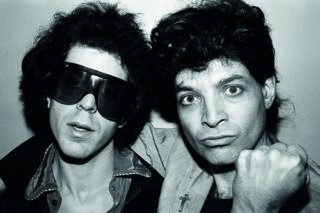
A deep dive into the work of New York's scariest avant-garde innovator
Outside of Quietus writers and Henry Rollins, I don’t think I’ve heard anyone mention Alan Vega or Suicide as among the all-time greats. At this point, the history of punk has been written and rewritten, but somehow Suicide have never really gotten their dues or been elevated to the level of the Ramones, New York Dolls or The Clash.
The reason, I think, is that their impact tends to be subtler than most. The band’s signature sound, consisting of simple pop melodies played on a crappy drum machine and a beat-up organ, lacked Kraftwerk’s technical sophistication and precision. Yet, arguably it remains as equally powerful as a guiding light for dance music. Similarly, Vega’s lyrics, delivered via a mix of deadpan monotone and feral screaming, might not have Jim Morrison’s poetry, but they’ve proven to be just as long-lasting. The main thing that Vega taught us is that in music, an attitude counts almost as much as technical ability.
Prolific right to the end, April will see Sacred Bones release Mutator, a lost album of Vega’s solo material. Recorded in the mid-’90s, the thing that jumps out at you is how relevant he still sounds. Even though he was approaching 60 when he recorded it, it still rings out with raw, dark energy, every bit as dangerous as when he used to terrorise New York club-goers with a bike chain.
With half a century of music to wade through, understanding Vega’s legacy can be a pretty daunting task. This, then, is a twelve-step program to help you get your head around his back catalogue, starting with the Suicide days and attempting to distil his wildly varied solo career.
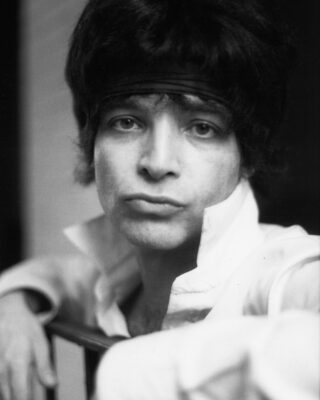
No, seriously. Suicide’s beginnings stem from a legendary Stooges show at the New York State Pavilion that Vega attended in 1969. An art graduate who’d already fallen in with a socialist-leaning pressure group, Vega was blown away. “The whole set lasted 20 minutes maybe,” he told the author Simon Reynolds for Pitchfork back in 2016. “Usually at rock shows, they put on some rock ’n’ roll between the bands’ sets, but right after the Stooges finished, whoever was in the sound booth put on one of Bach’s Brandenburg Concertos. It was perfect.”
Lester Bangs had coined the phrase ‘punk’ in the late ’60s as a way to single out the no-nonsense sound of Detroit bands like The Stooges and The MC5 from the bloated, out-of-touch rock world still lost in a hippy daydream. Seeing themselves as fellow travellers, Suicide fell upon the term like starved children, being among the first bands to label themselves as punk and calling their first shows “punk masses”.
To get Suicide, you need to understand the strange alliance between Alan Vega and Martin Reverly at the band’s core. On paper, the pairing of Vega, an Elvis-obsessed visual artist, and Martin Rev, a jazz-loving experimental keyboardist, should’ve never worked. And that’s without factoring in the duo’s music – a strange brew of wispy electronica delivered at blood-drenched live experiences. Honestly, it’s hard to explain.
From the beginning, though, Suicide was intended to be more of a performance art project than a piece of conventional music. The idea was to create happenings that broke down the distance between the audience and the performers, creating an environment where everyone had to participate whether they wanted to or not. Inevitably, this meant that violence was never that far away in those early days. Lumped awkwardly into New York’s glam scene and dressed like leather-clad street thugs, the duo deliberately brought the in-your-face antagonism of the city’s streets to the stages of the art clubs they played.
It’s important to remember that the USA of the mid-1970s was very different to the USA of the 2020s. A spike in oil prices, a stock market crash and the defeat in Vietnam had brought a sense of reality crashing back into American culture, leaving the drugged-out excesses of the art scene increasingly at odds with the mean, uncaring reality of the streets.
Suicide always intended their music to antagonise their audience. Inspired by Iggy and socialist politics, Rev and Vega saw the violence as a way to force a middle-class audience to pay attention to the degradation and inequality that they’d usually ignore. “The audience would walk through the door of the venue, and they’d be in hell,” Vega explained in an interview with The Jewish Chronicle in 2008. “We were saying, ‘Wake up, man. You’ve gotta change this shit!’”
Fusing Cluster and Eddie Cochran, Suicide’s first self-titled record still stands among the most radical debuts from any act. Only seven songs in lengths, mostly it’s bittersweet ballads smothered in swirling atmospherics and empty reverb. But it’s its brutal simplicity that makes it groundbreaking.
Case in point: the album’s closer ‘Frankie Teardrop’. The only track to clock in at over ten minutes on a record where most tracks barely make it to three, it begins as a eulogy to a factory worker called Frankie, who seems to step straight from one of Bruce Springsteen’s gallery of working-class heroes. However, Vega quickly takes it further. Falling behind with his bills and unable to feed his wife and kids, our hero ends up shooting his family dead. The song ends with Frankie tortured in a hell of his own and Vega slowly turning the camera to face the listener. “We’re all Frankie.”
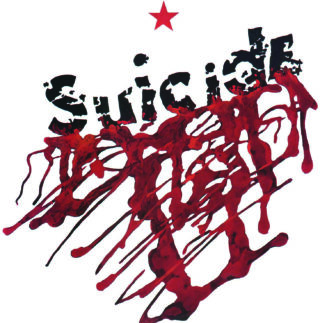
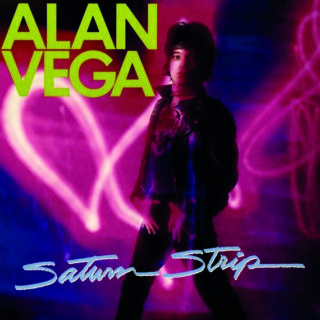
Suicide’s effect on music was a bit of a slow burner at first. Most punks hated them. “We were supporting The Clash and I guess we were too punk even for the punk crowd,” Alan Vega told The Guardian‘s Jon Wilde in 2008, recalling a particularly memorable evening in Glasgow. “They hated us. I taunted them with, ‘You fuckers have to live through us to get to the main band.’ That’s when the axe came towards my head, missing me by a whisker. It was surreal, man. I felt like I was in a 3-D John Wayne movie. But that was nothing unusual. Every Suicide show felt like World War Three in those days.”
But for every homicidal punk, others saw the future. Suicide, with their simple two-person setup, became the blueprint for bands like Soft Cell and other synth-pop acts looking dour on Top of the Pops. Meanwhile, the sense of impending doom filtered through a tinny drum machine launched a legion of goth bands, including Sisters of Mercy, Bauhaus and Siouxsie and The Banshees.
Later, The Jesus and Mary Chain, Primal Scream and Nine Inch Nails would all imitate aspects of Suicide, from the aggressive stage show to cold, unrelenting musical savagery. Post-Millennium, the band are still being referenced, either through covers by The Horrors, Bruce Springsteen and Neneh Cherry or sampling, such as MIA’s use of ‘Ghost Rider’ on 2010’s ‘Born Free’.
By 1980, Vega and Rev seemed bored of being the edgy weirdos and were looking to get in on the New York party scene. All it took was Michael Zilkha of Ve Records to pick up a copy of Donna Summer’s ‘I Feel Love’, look at Suicide, squint really hard, and think, yeah, these guys could do disco.
Giorgio Morodor was Zilkha’s first choice for the producer (just imagine that), but being unavailable, The Cars’ Ric Ocasek eventually took the reins. Working almost exclusively with Martin Rev while leaving Vega to concentrate on the lyrics, he managed to tease out a vein of pop in the duo’s minimal sound. The result is a record with all the rockabilly snarl and moody electronics of the first album but a lot more heart. From the melancholy heartache of ‘Dream Baby’ to the tough-talking electronica of ‘Harlem’, Ocasek kept Suicide’s experimental tendencies under wraps and tidied up their sound, turning what should’ve been a collection of weird art house curiosities into a dark pop masterpiece.
Artistically, at least, Suicide was gassed out after the second record. 1988’s A Way of Life and 1992’s Why Be Blue were both decent albums in their own right, but somehow they lacked the magic or the menace of the early work. Alan Vega spent the early part of the 1980s exploring the rock ’n’ roll of his childhood. His first solo record, Alan Vega, is basically a straight-up R&B record, replacing the harsh electronica with lush if equally sparse guitars. 1981’s Collision Drive continued the trend and even reshaped the Suicide classic ‘Ghost Rider’ into a Chuck Berry number.
This Vega wasn’t retreating into the warm comfort of the past. Both records contain some of his most experimental work, typified by ‘Collision Drive’s Viet Vet’ – a 13-minute dirge in the spirit of ‘Frankie Teardrop’, filled with menace, regret and unreleased tension.
By 1983, Alan Vega was done with being one of pop’s outsiders. Determined to land some of the fame and fortune he’d so far avoided, he signed with major Elektra and reunited with Ric Ocasek. The plan? Apply as thick a coat of pop sheen as his music could handle.
Condensing his experimentalism into straight-forward four-minute pop songs, Saturn Strip should be heresy to Suicide fans; it turns out its a work of rare genius. Dropping all the self-indulgent musings and extended jams for simple song structures manages to elevate Vega’s provocative lyricism and fractured delivery. It holds a weird mirror to the glamour and cynicism of the ’80s, slipping between hedonistic disco and cold-hearted reality.
Ending with a cover of Hot Chocolate’s ‘Every 1’s a Winner’, it was a complete commercial failure.
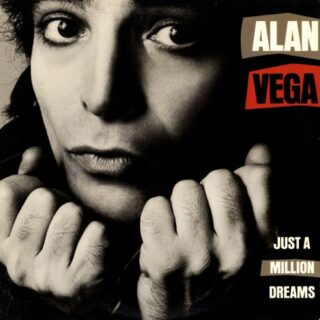
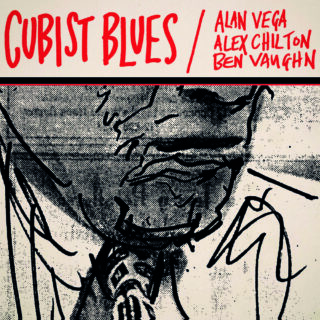
Sensing that he had one more shot at the big time left in him, Vega tried again for chart success in 1985 with Just A Million Dreams. Marred by struggles with his label, with Elektra even trying to remove the singer from his own record, it’s a horrible, disjointed mess. A commercial and critical flop, it sounded both banal and hideously dated, even at the time.
Worse, Just A Million Dreams ushered in a bit of a fallow period for Vega. The late ’80s and early ’90s are littered with ambitious yet over-polished misfires, with both Deuce Avenue and Power On Zero Hour falling as victims to Vega’s inability to edit himself. Outside of music, it was a different story. Deuce Avenue War/The Warriors V3 97, his first book of photography, appeared in 1990, while Cripple Nation, a collection of prose and lyrics, came out in 1991. Right until the end, Vega’s approach to work was similar to cooking spaghetti – he threw so much against the wall that even during his worst periods, some things stuck. His back catalogue is full of exciting experiments and the odd hidden gem.
Like an old-time jazz session when the cats would just show up and see what happened, Cubist Blues came out of two consecutive dusk-til-dawn sessions at Dessau Studios in New York’s Lower East Side. It’s just that this time, the players were terminal outsider Alan Vega and roots rockers Ben Vaughn and Alex Chilton. The output turned out to be an unholy union of Gene Vincent, noir blues and gothic pop, and it is one of the most captivating if cruelly overlooked rock records of the 1990s.
Recalling making the record to James F. Thompson in these very pages in 2015, Vega still couldn’t understand how it had happened. “I was surprised by it, how intense it was. I had to understand how, like, I thought it was so commercial. But it’s not… it sounds great. It’s really a great record! I could listen to it over and over again and be like, ‘Holy shit!’ I don’t know how I did it, but I did it! I really did it! I really hate to say it, I kinda wish it was shit, but I really amazed myself. I didn’t realise I’m as much a blues singer as I am.”
Cubist Blues should’ve been a massive success, but landing in 1996 – when the pendulum had swung away from US alt. rock after the death of Cobain and grunge – it ended up flying underneath everyone’s radars. Yet again, Vega’s sense of timing was dreadful.
One of the most commendable things about both Suicide and Alan Vega is that neither was interested in resting on their laurels or looking back in any way. Both pushed the envelope relentlessly forward, exploring new sounds and new horizons.
In 2010, for example, the band finally agreed to an ATP Don’t Look Back show where the idea would be to play their first album in its entirety. Instead, the duo reinvented themselves, rethinking the old tracks and filtering them through modern technology. Rendering the tracks mangled and borderline unlistenable, the reaction turned out to be a strange echo to that debut. A large portion of the crowd hated it, expecting to hear a perfect recreation of what they’d heard on record. They’d forgotten that for Suicide, there was only ever the future.
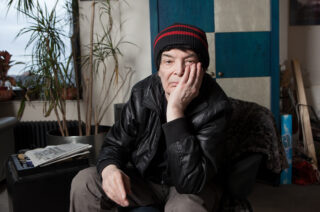
There’s a lot of contradictory things about Alan Vega. Presenting himself as a nonsense straight-talker, he was notoriously cagey about revealing his age. Only after his death would the world find out he was ten years older than he said he was. He could also be prickly, self-promoting and downright belligerent at times. He yearned for success yet was weirdly turned off when Suicide finally got popular. Sometimes it was hard to tell if he was joking: “I said to Marty; I’m finished,” he told The Guardian once, bemoaning a sold-out show. “Where’re the confrontations? What are we gonna do now? People are dancing to this shit.”
In the end, though, Alan Vega was the great connector. In some ways, his music is the proto-version of a whole raft of genres, be it punk, techno, electronica and goth, but in other ways, it also reached back to connect the future and the past. Listening to a song like ‘Cheree’, for example, it’s hard not to see the line from Lou Reed cutting straight through the middle and heading off into the future. Maybe that’s the reason his music sounds so resonant, even fifty years on.